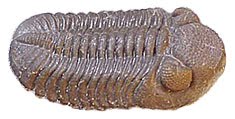Adventures on Earth column for the Dec. 1 edition of The Review
By George E. Beetham Jr.
Many people stop hiking during the cold winter months. Yet winter is a great time to get outdoors and check out what’s going on in the natural world.
Some people look at the natural world in winter and see a dead world. Nothing could be further from the truth. The forest is very much alive, a fact that will become readily apparent if there is snow on the ground.
That is when the creatures that are out and about leave tracks in the snow.
That is when a person can see that there really are turkeys in our woods – a fact that the otherwise elusive creatures tend to obscure the rest of the year.
In fact, if you are so inclined, you can follow turkey tracks through the forest and get an idea of what life is like for turkeys.
Deer also lurk in the winter forest, their long gray fur helping them to blend in to the black and gray forest.
Winter is not an easy time for deer. Most of the greens they eat during the growing season are gone in winter. Deer must settle for whatever they can dig up from the snow or the tips of woody shrubs and trees.
Bear may or may not be dozing the time away in their dens. Black bear, the kind that inhabit the East, are light sleepers that emerge on warmish days to prowl about in search of food.
Bear will dine on mast during winter – the acorns and other nuts that fall from trees and lie about on the forest floor.
Bobcat and coyotes roam the winter forest looking for deer or other creatures that can make a meal. Their chances of success in winter are increased if deer cannot get as much food as they need to stay healthy. It’s nature’s way of weeding out the weak and lame.
Squirrels and over-wintering birds flit through the forest, chipping or chirping alarms as two-legged intruders lope along a trail.
Some hawks and owls winter in the region, squirrels, rabbits, and birds on their winter menu.
Unless it gets unseasonably warm the insect world is gone from the winter forest. Many insects lay eggs and die before the cold sets in. Their eggs will hatch on warm days, filling streams with larvae and providing an early spring meal to fish and other aquatic creatures.
The leaves are gone from deciduous trees and from tamarack. Pines, spruce, hemlock, and balsam break up the gray-brown of the winter forest, accent points of green.
When high and low pressure align close together, the pressure differential between the two can force cold winds to descend from the north.
On days when that happens, trees groan and creak as they flex. At times a tree is bent too far and cracks with a loud report that sounds like a gunshot. It hits the ground with a thud. It’s an alarming sound, especially so since there are trees all around that are bent from the force of the wind.
Ice flows from cliffs like frozen waterfalls. When sunlight glints off the ice it seems almost alive as it sparkles.
Waterfalls freeze as well, with water sometimes still running amid the columns of ice. If the ice has built up over time it can be quite impressive.
On days when the temperature warms up a bit, another bit of geology can take place. Freezing water acts like a wedge in the cracks and joints of rock formations. When it warms up rock breaks loose and falls from cliffs.
Frost heaves push up from loose earth, another feature of the freeze-thaw cycle.
If you are lucky enough to be in the forest after fog freezes on trees and shrubs, you will delight in rime ice, appearing like frosting on a cake.
All of that and more can be found in the winter woods for those who get out and enjoy the life of winter.
Remember to wear sturdy, waterproof foot gear and to dress in layers. When hiking it’s good to avoid over-heating by removing a layer or two. When stopping to take a break, adding layers will keep you warm.
Enjoy the life of winter.

No comments:
Post a Comment